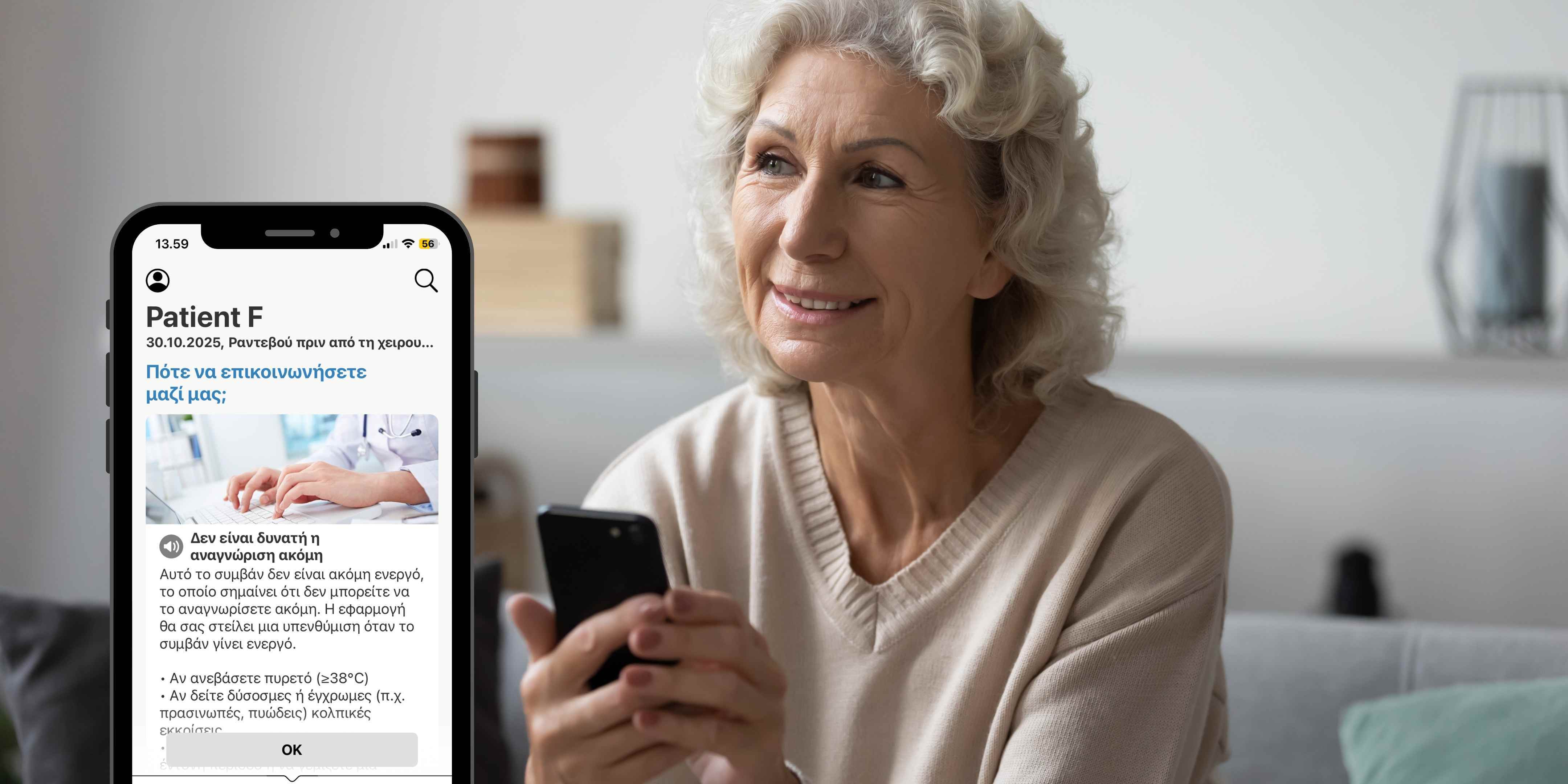Many healthcare providers are considering whether to centralise all digital transactions into one app or whether, for example, care pathways should be in a separate app. The idea is often simplicity: one app through which the patient could handle everything, from appointments to care pathways and health information.
Even EPIC's MyChart app, the world's largest provider of patient information systems, has integrated separate care pathway solutions to support care processes comprehensively without trying to fit everything into one system.
But would this be practical and even possible? Usability, technical implementation, and patient needs, especially professionals in managing care pathways, do not support this idea. In this blog, we delve into why.
One app: Easy idea, but problematic in practice
The idea of a single "all-encompassing" app is understandable: it would reduce the number of apps patients need and could simplify the hospitals' or healthcare providers' IT architecture. However, if all functions are combined into one app, problems arise.
1. User experience suffers
- Care pathways and general digital transactions are different use cases with completely different usage needs.
- A combined app may become too large and complex, which degrades the user experience.
- Accessibility decreases, making it even more difficult for special groups, such as the elderly, who are typically numerous in care pathways, to manage their affairs.
- It does not make sense to provide a patient needing a care pathway, a mobile application that contains many non-care pathway-related information. Such as bill payments, general messages, and prescription data.
2. Care pathways require specialised functionalities
- A care pathway app is an active tool that guides patients through their care pathway. It includes reminders, tasks, status information, and automatic personalisation according to the disease and the care pathway's status.
- A digital services application is more passive, i.e., the patient only uses it when they need something (e.g., when making an appointment). Digital services are designed for episodic care, not long-term care.
- A combined app would have to handle very different data and use cases, significantly complicating and slowing development.
3. Notifications and time management are different
- Care pathways are based on continuous interaction: the patient must receive precise notifications and instructions, such as updating medication information, doing exercises, or disease-related monitoring.
Digital transactions, however, are based on the patient's needs: the patient decides when they want to check lab results or make an appointment.
- Suppose all functions are combined into the same application. In that case, notifications may get lost among other notifications or there will be too many of them, which may cause the patient to start ignoring them.
4. Technical complexity and slower development
- One large app also means one large and complex system.
- Development work slows down because all new features must fit into a single entity.
- A modular approach, where care pathways and digital transactions are separate apps, enables significantly faster development and iteration.
5. Medical device and increased bureaucracy
- If all functions are combined into one app, the entire entity becomes a medical device. This brings significant challenges:
- More bureaucracy – a medical device requires stricter regulation and continuous documentation.
- Slower development – a larger system is harder to change, slowing the introduction of new features.
- Regulatory requirements affect the entire app, even if only some functions handle medical information.
6. Patient safety
- A care pathway app requires active monitoring – reminders and tasks are directly related to the patient's care.
- If reminders are lost in a general digital services app, the patient can easily miss critical notifications because they are not distinguished from other messages.
- In a separate care pathway app, the patient knows even before opening that the message is directly related to their care, which ensures that it is more likely to be noticed.
Multiple apps: Better user experience and technical sustainability
Different apps for different purposes may seem complicated at first, but it is easier for the user and technically a much more sustainable solution.
Better user experience for the patient
- The care pathway app is straightforward and purposeful, only information related to the care pathway is included.
- The digital services app can focus on appointments, lab results, and other general services without having to add specialised functions for care pathways. Most users of healthcare services do not need or end up on a care pathway.
- The patient can focus on the essentials and does not have to search for functions related to their care pathway in a large app.
Notifications and usage logic are clear
- The care pathway app can send only reminders and instructions related to the care pathway, so the patient does not miss them because of other things. The care pathway app thus focuses on the specific disease/diagnosis that is being guided more closely by a professional.
- The digital services app can focus only on notifications related to appointments or messages.
Modularity enables flexibility
- The care pathway app can be developed independently, and new functionalities can be added without changing the entire hospital's or health system's services app.
- If care pathways are to be expanded later or separate apps are to be made for specific needs, they are easier to implement.
- Future innovations and artificial intelligence solutions are developing rapidly, and it is unrealistic to expect that one app could keep up with development.
Summary: Care pathway app and digital services should be kept separate
While one app sounds like a simple solution, it can cause more problems than it solves. Care pathways and digital transactions are different use cases with varying usage needs, rates, and technical requirements.
The best solution is a separate care pathway app focusing solely on supporting care pathways, and a separate digital services app that handles other healthcare transactions.
This achieves:
- Better user experience for patients
- Clearer notifications and user paths
- Technically more sustainable and flexible solution
- Ability to develop the care pathway app without having to change the entire well-being county's services app
The main task of the care pathway app is to help the patient during care, not to act as a general healthcare transaction tool. It needs its own, lightweight, and functional app – not one large and confusing system.
The purpose is also not to set apps against each other, but to understand that one app cannot contain all future digital care innovations.
- One app can complement another without trying to replace it.
- Interfaces and integrations allow different apps to work together without making them one monolithic system.



